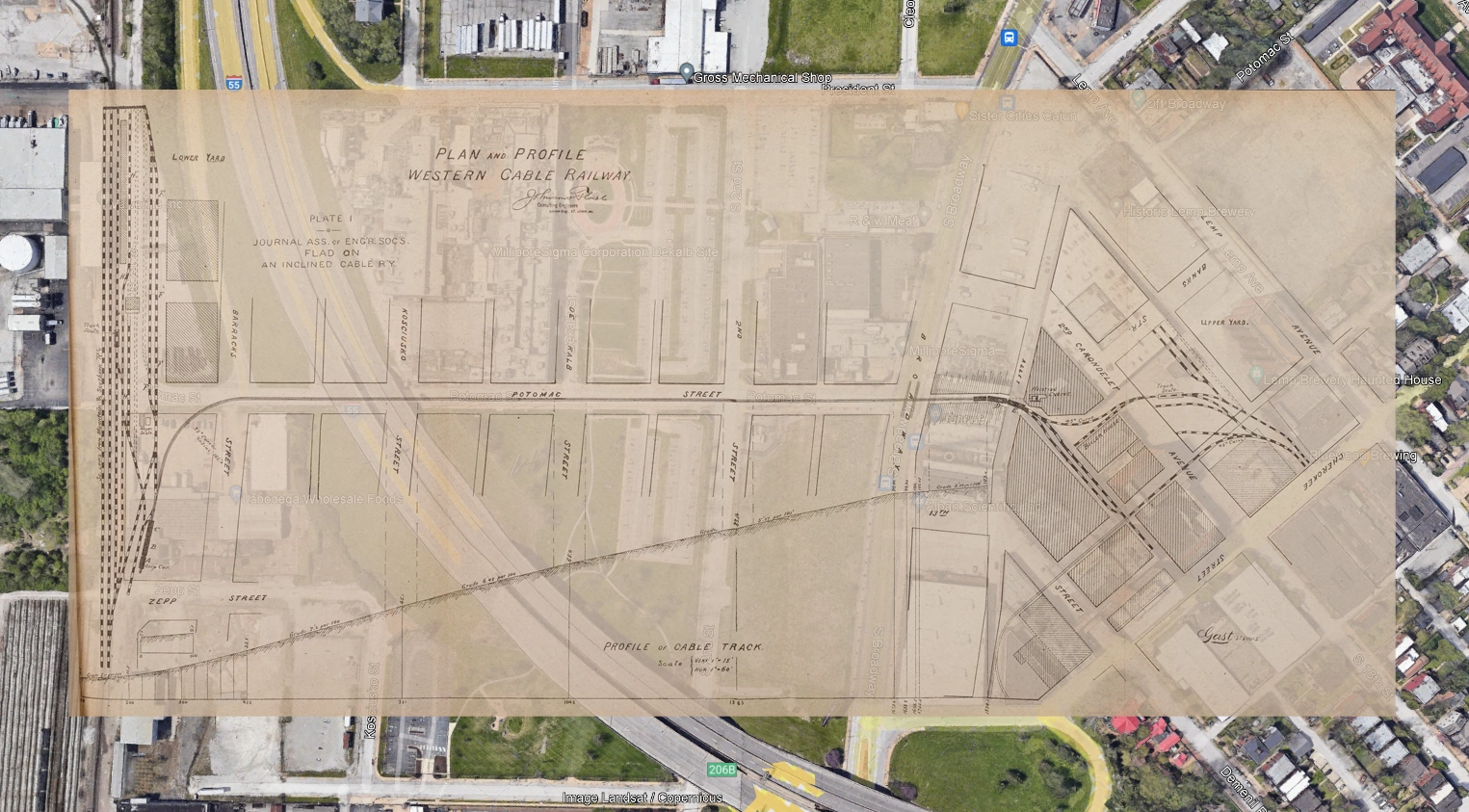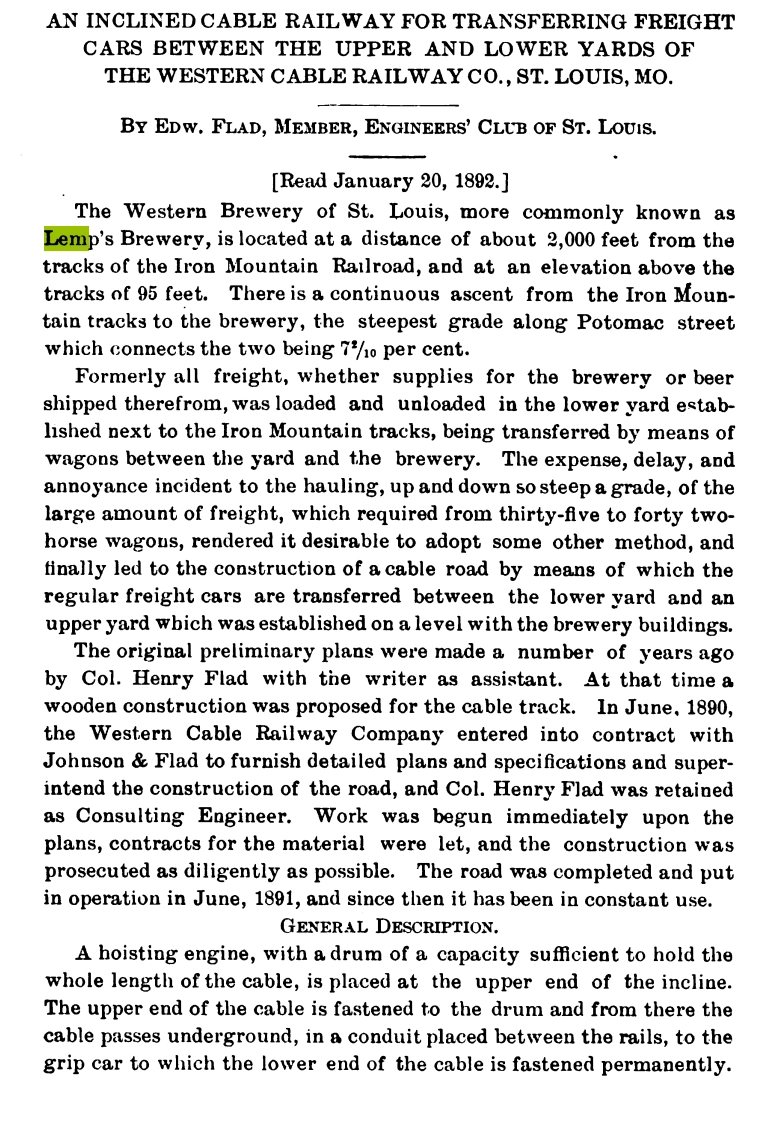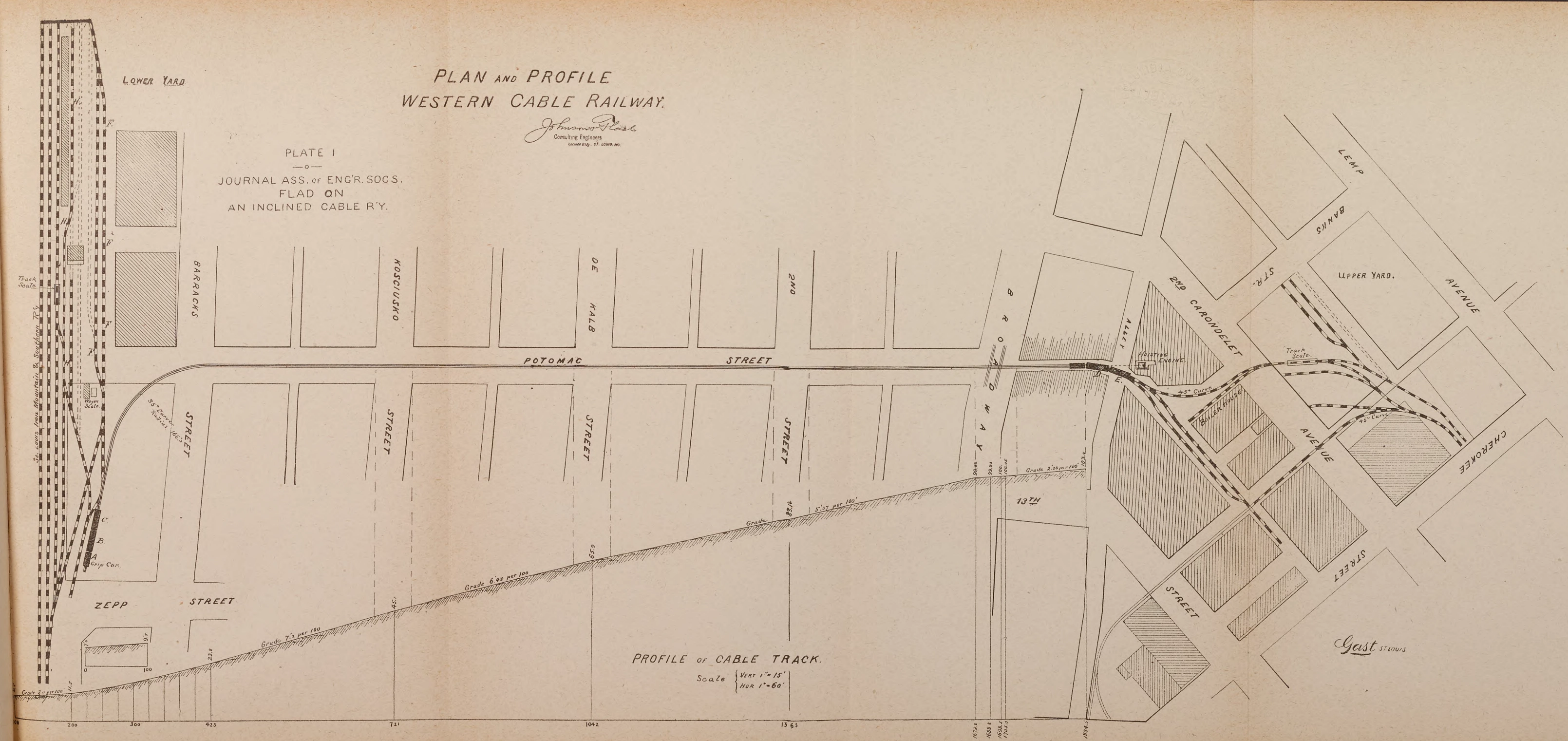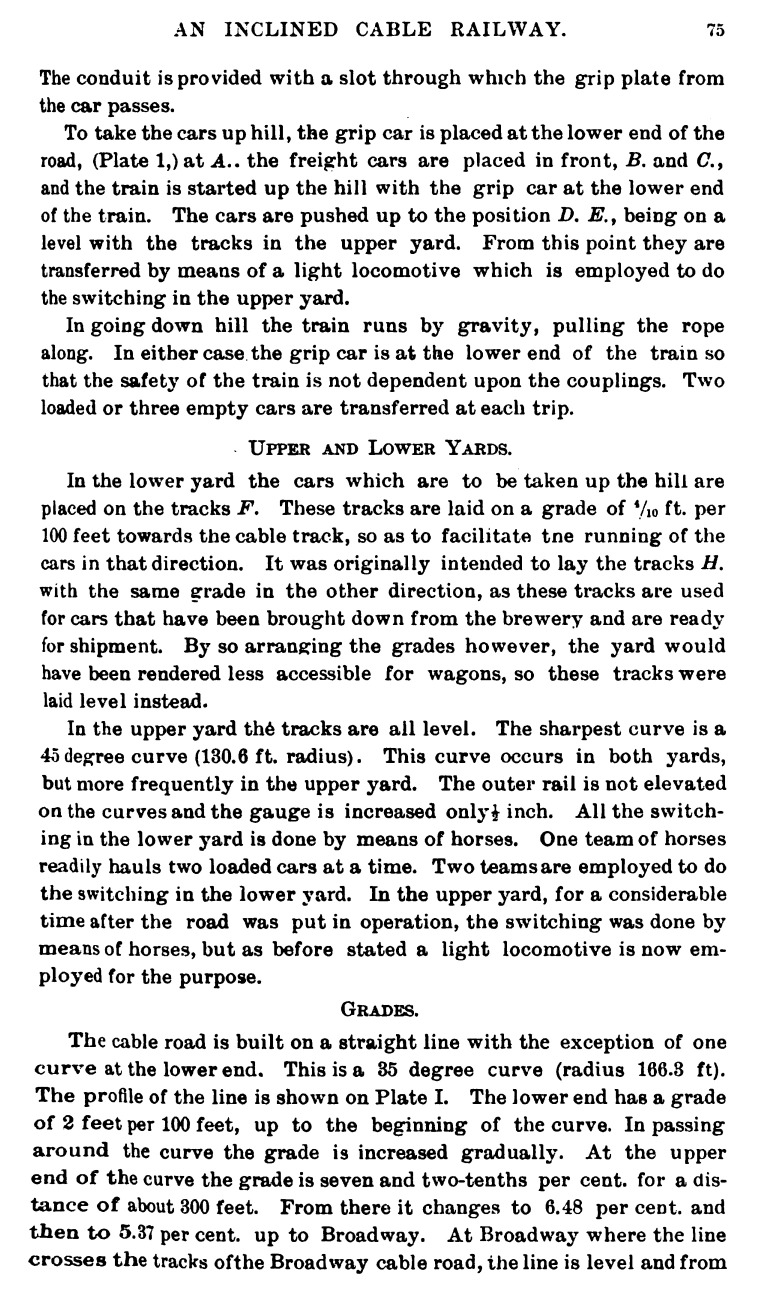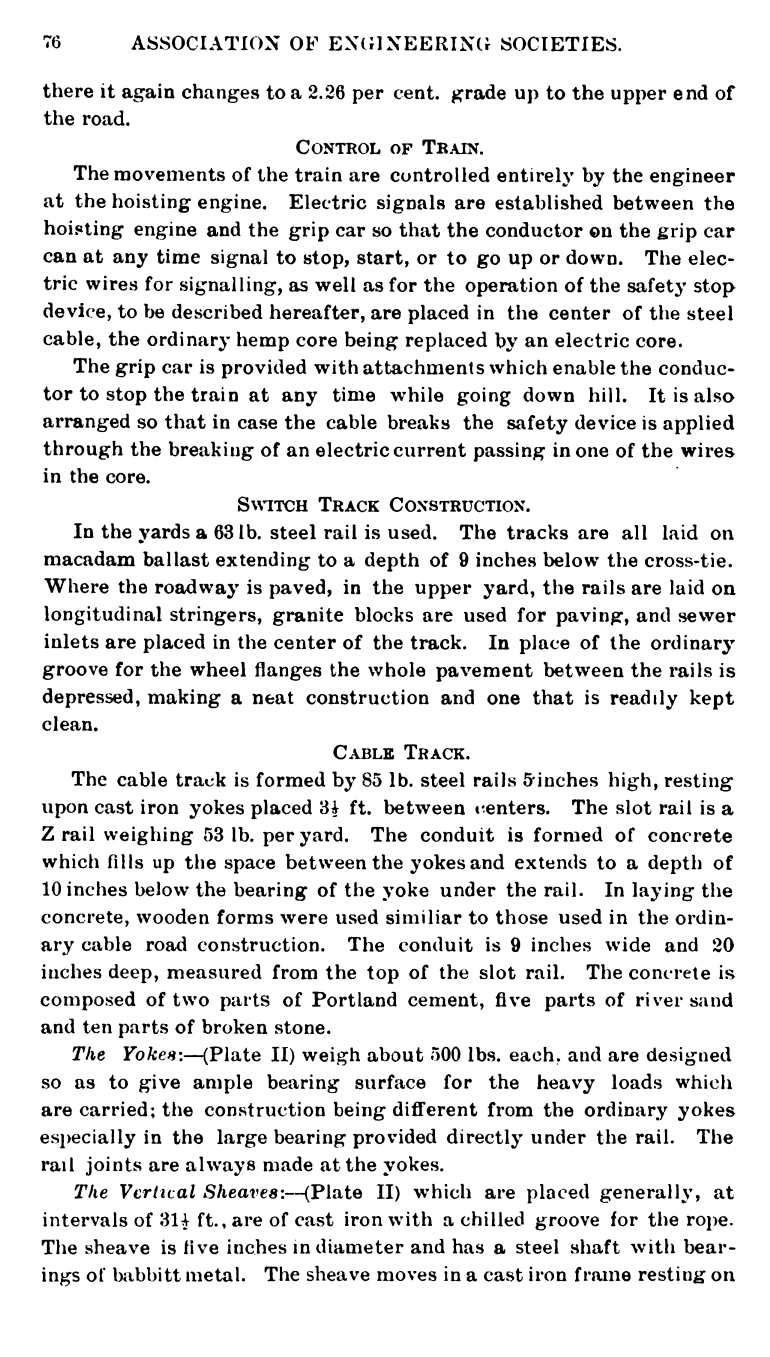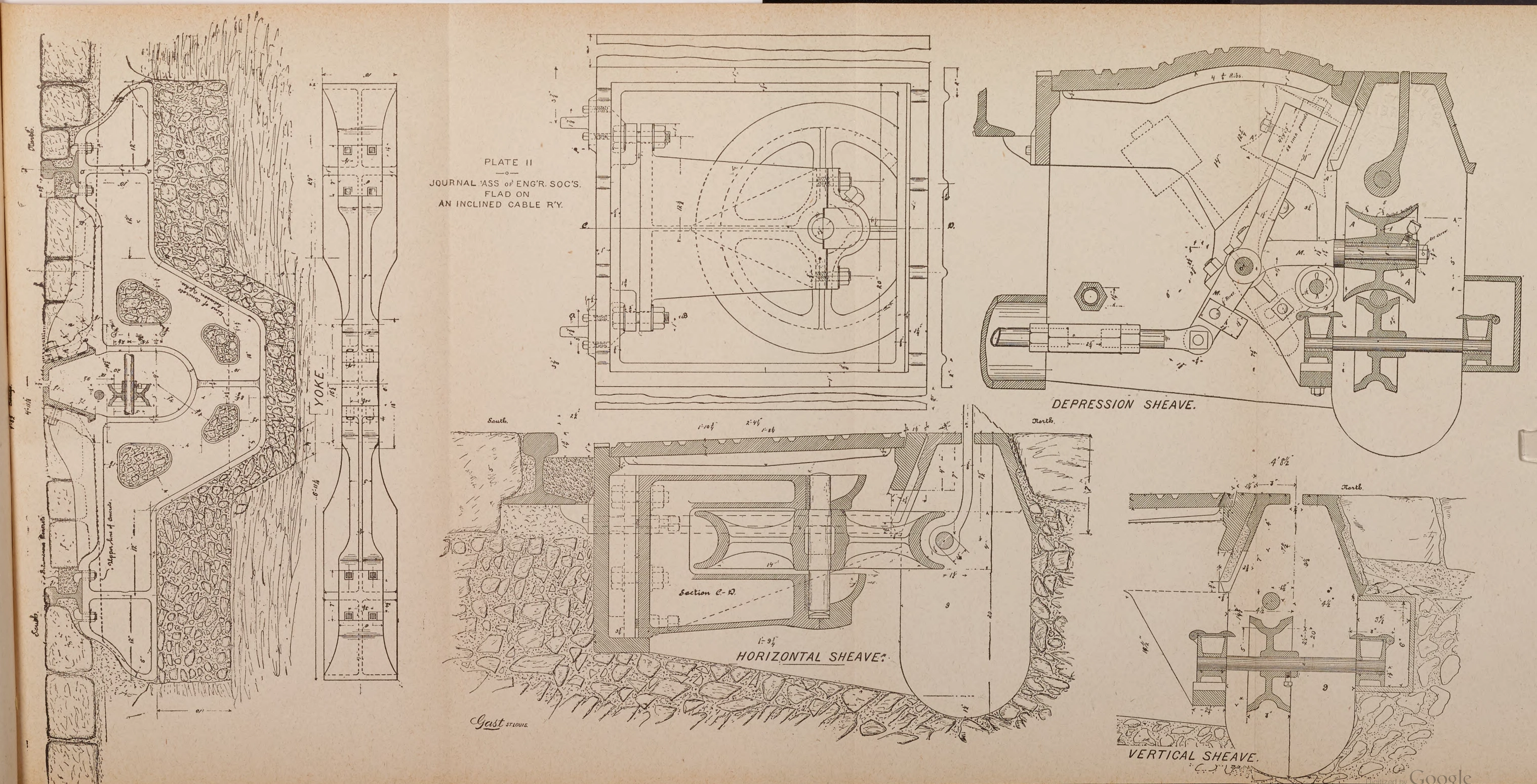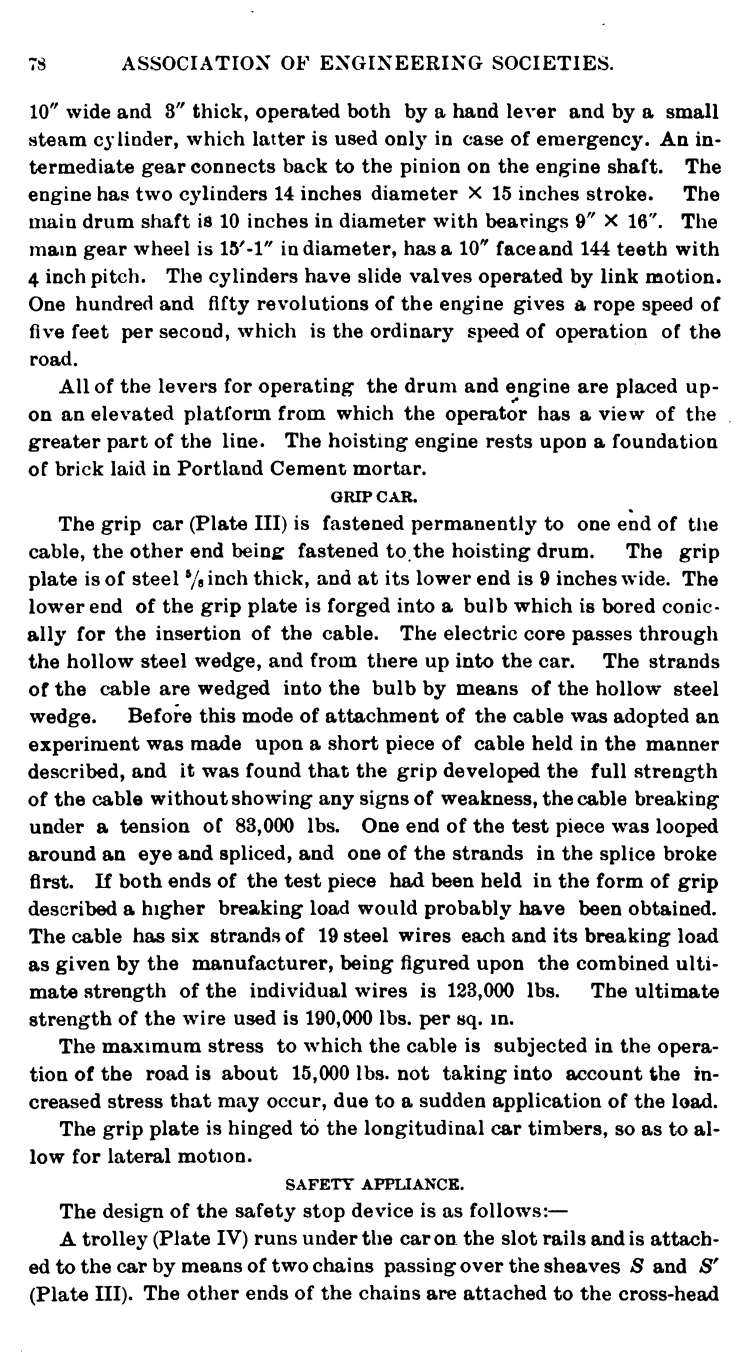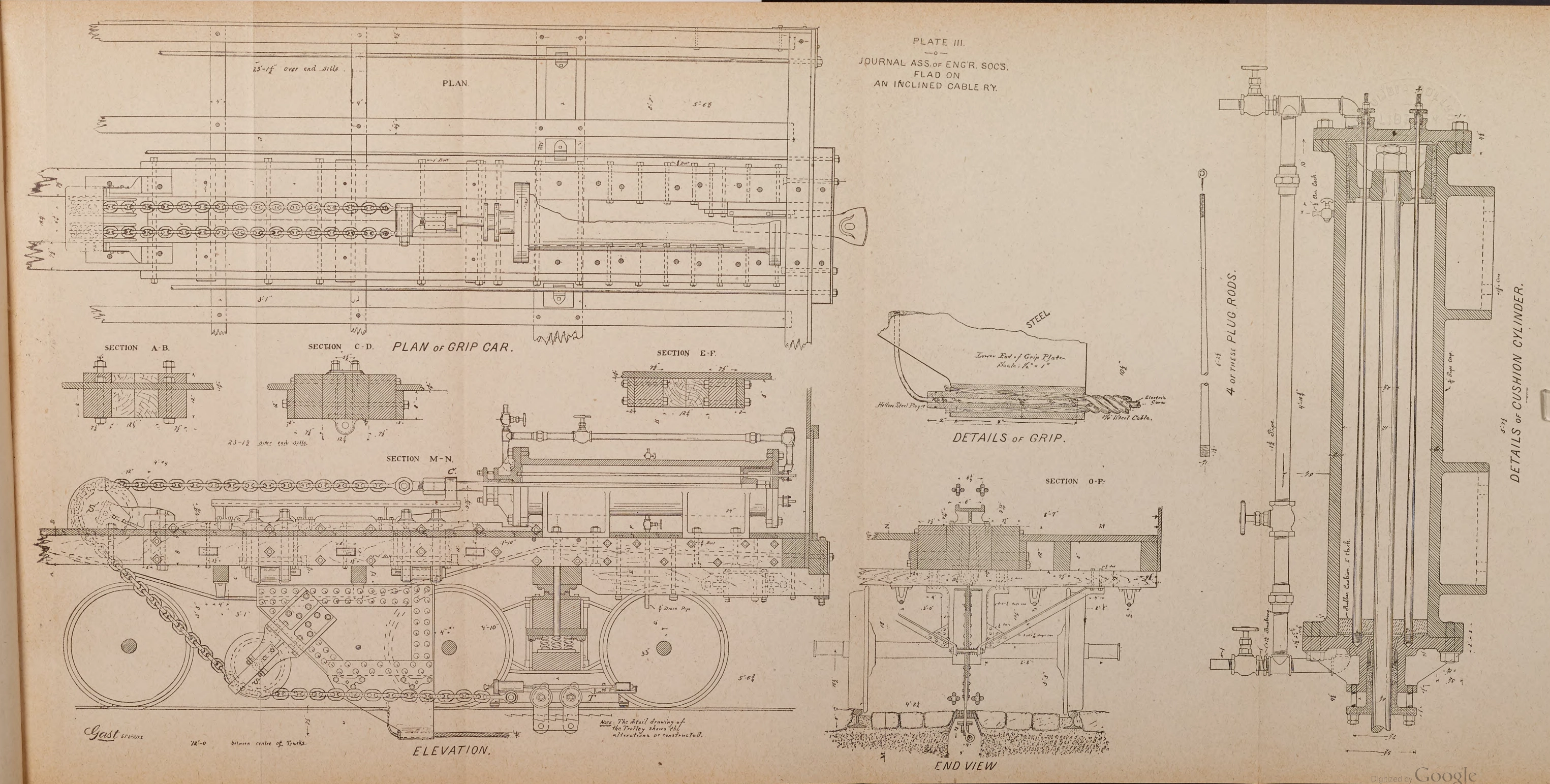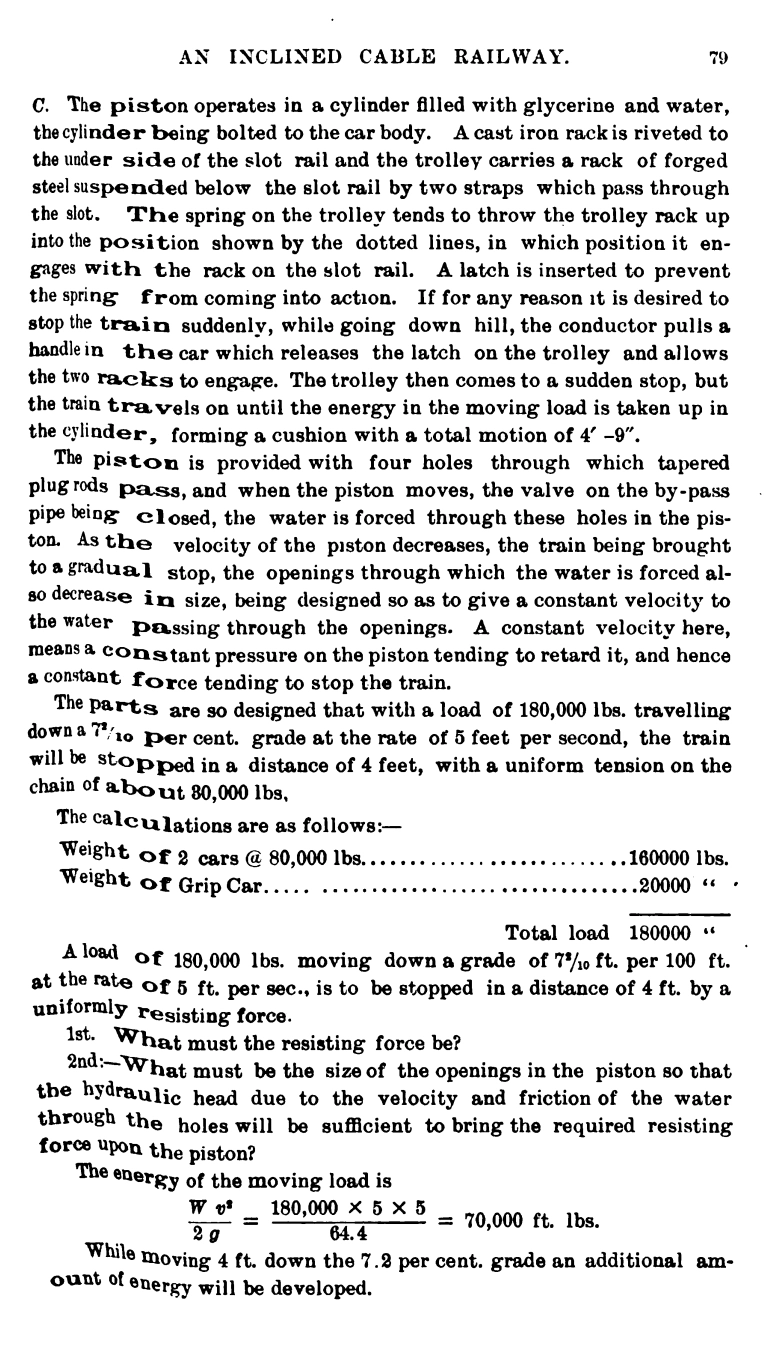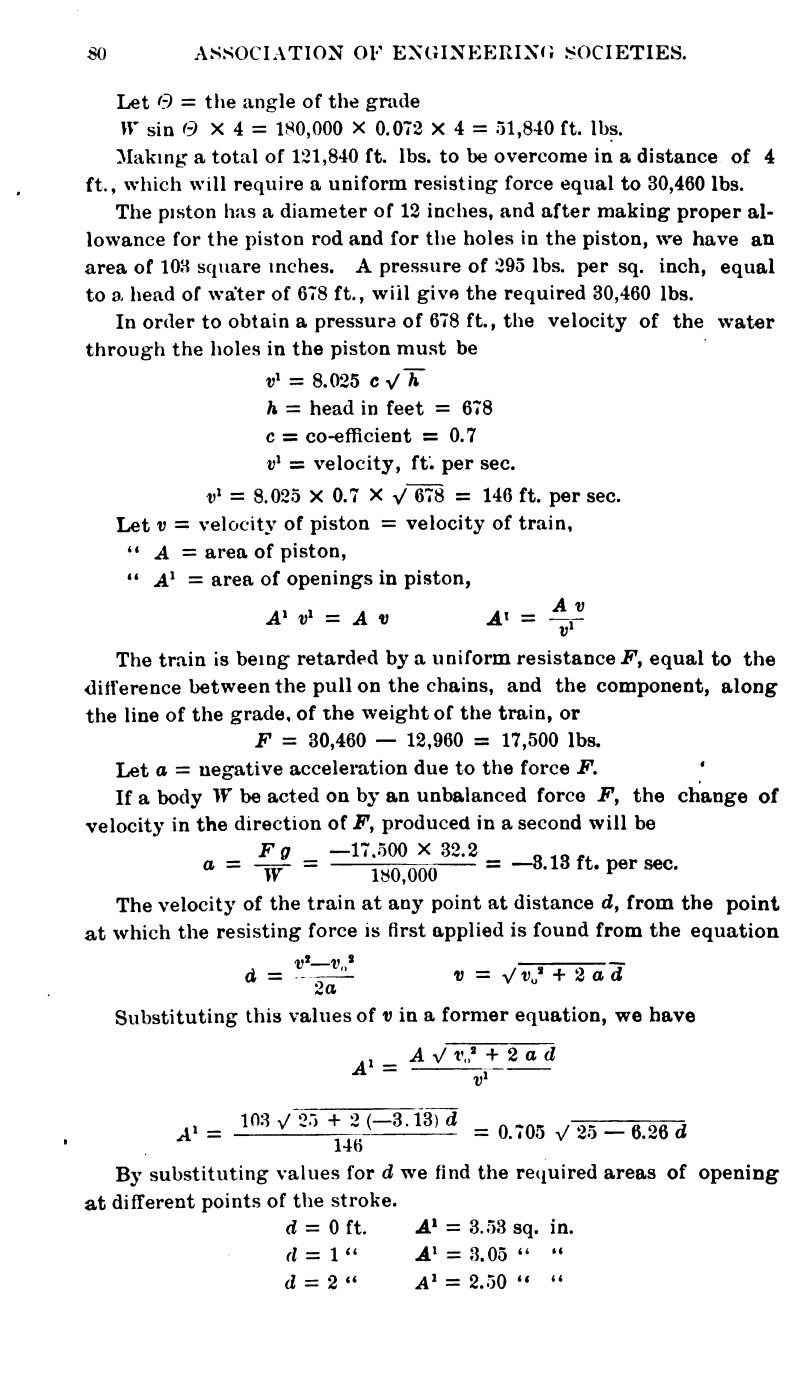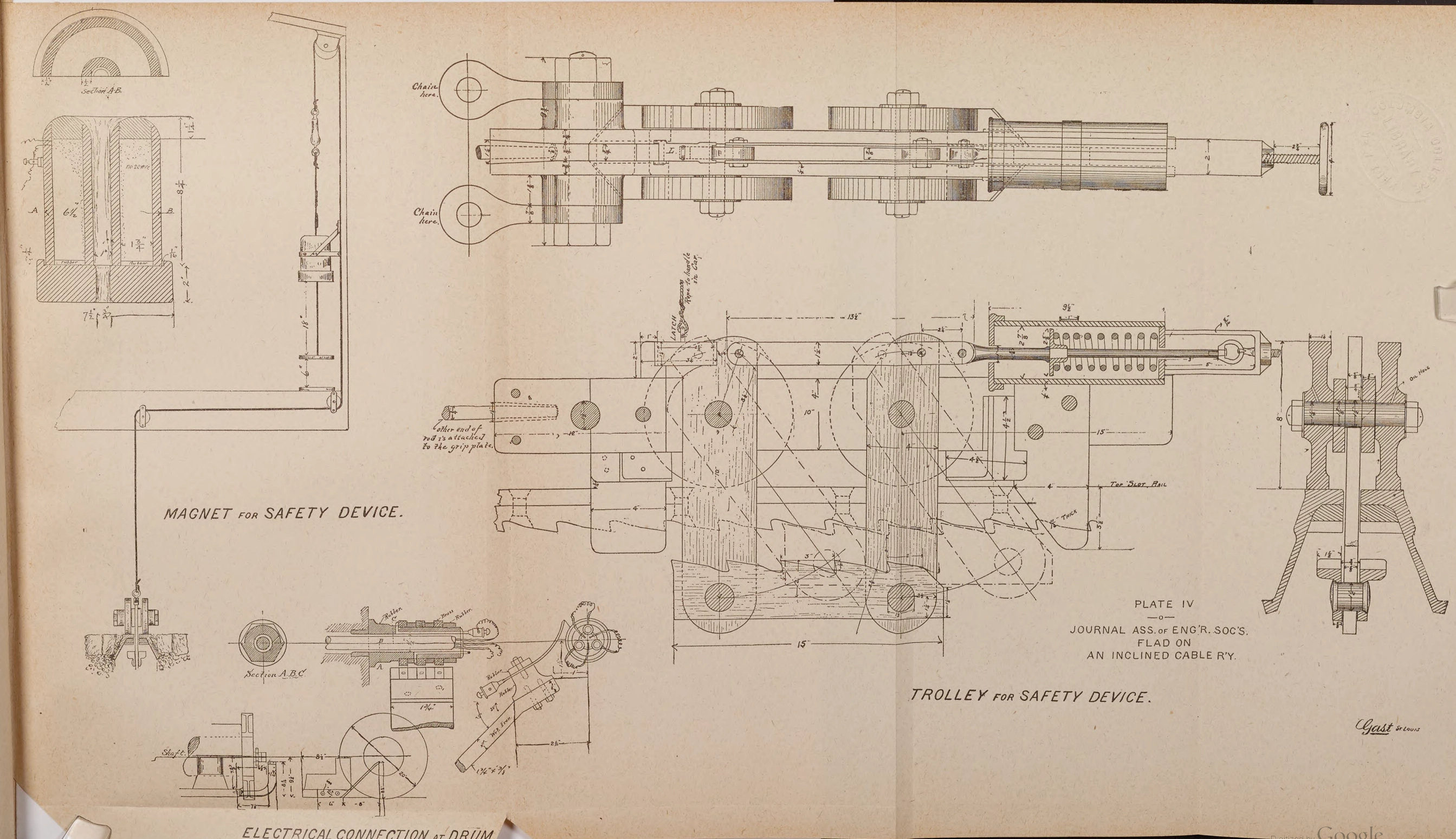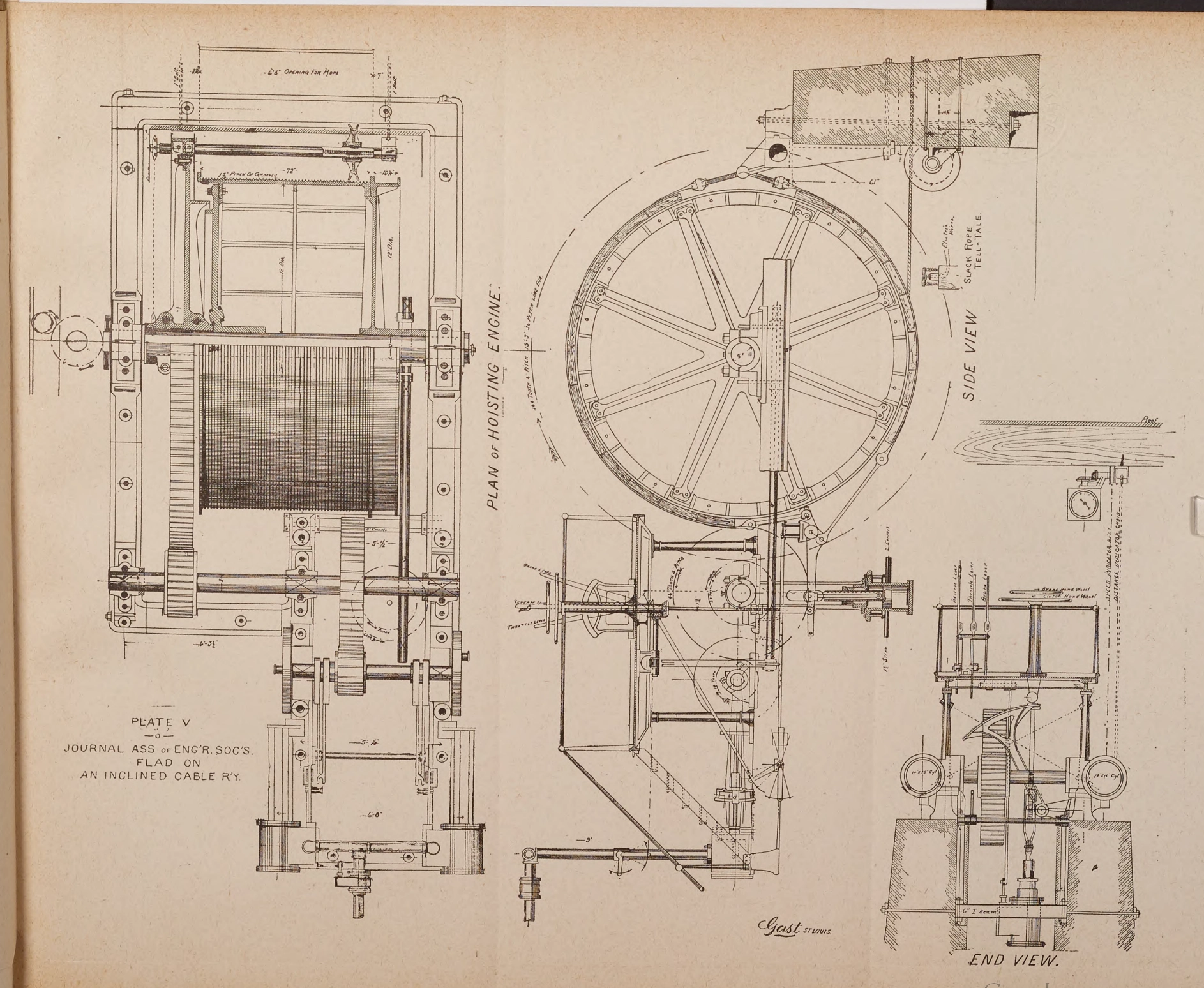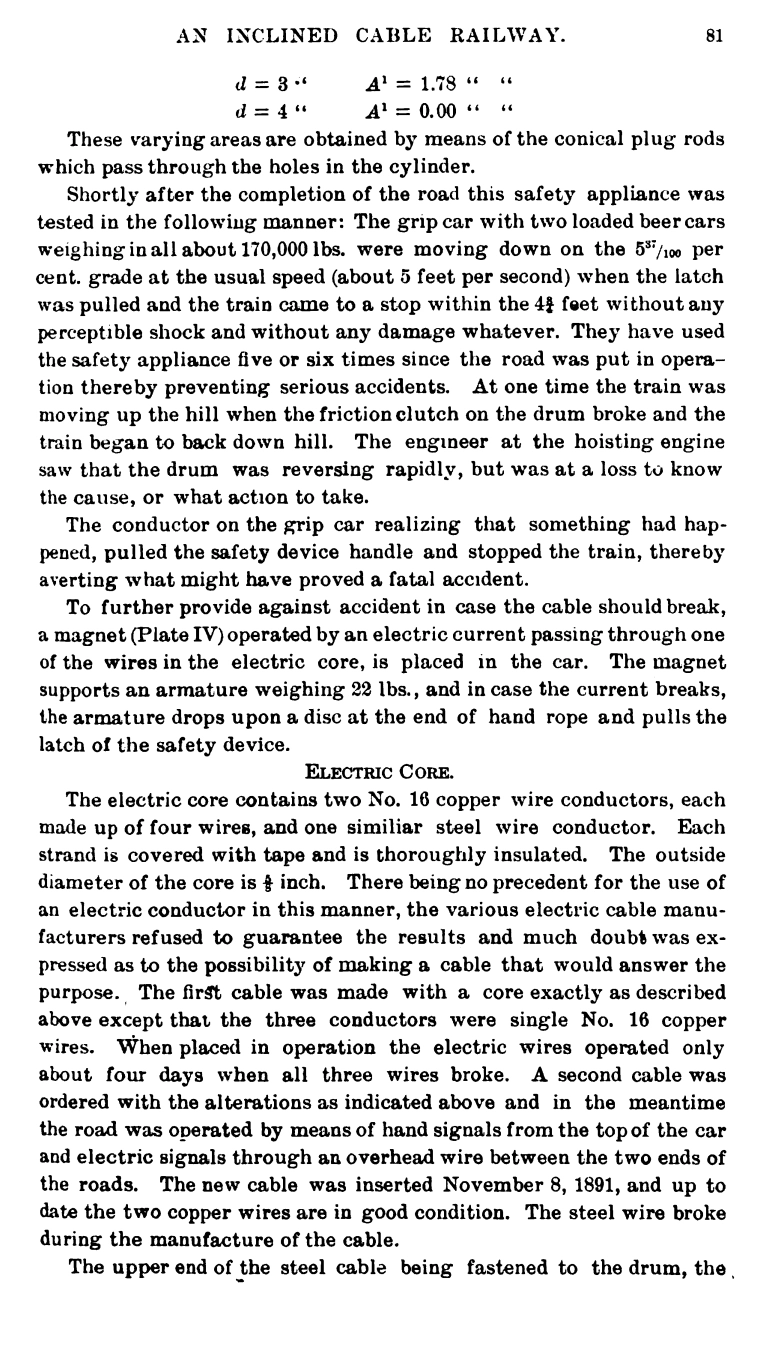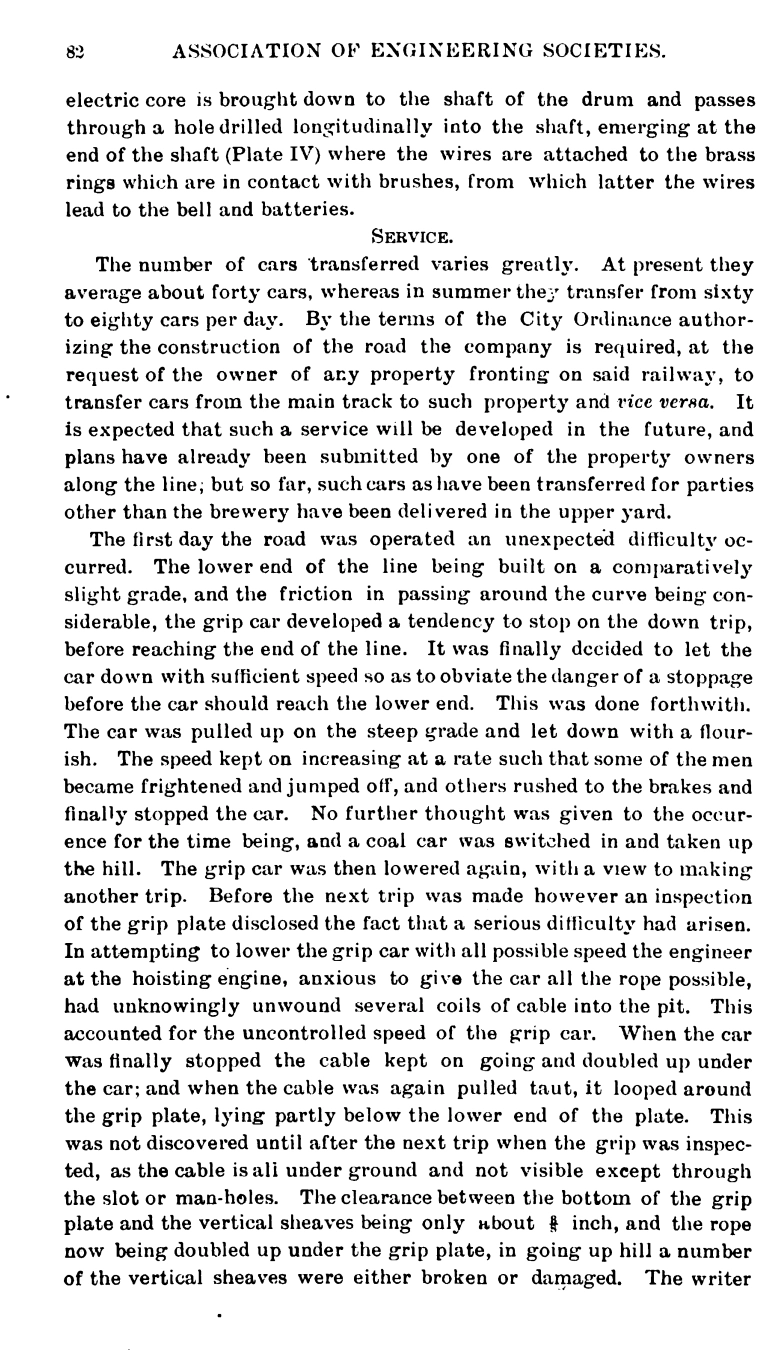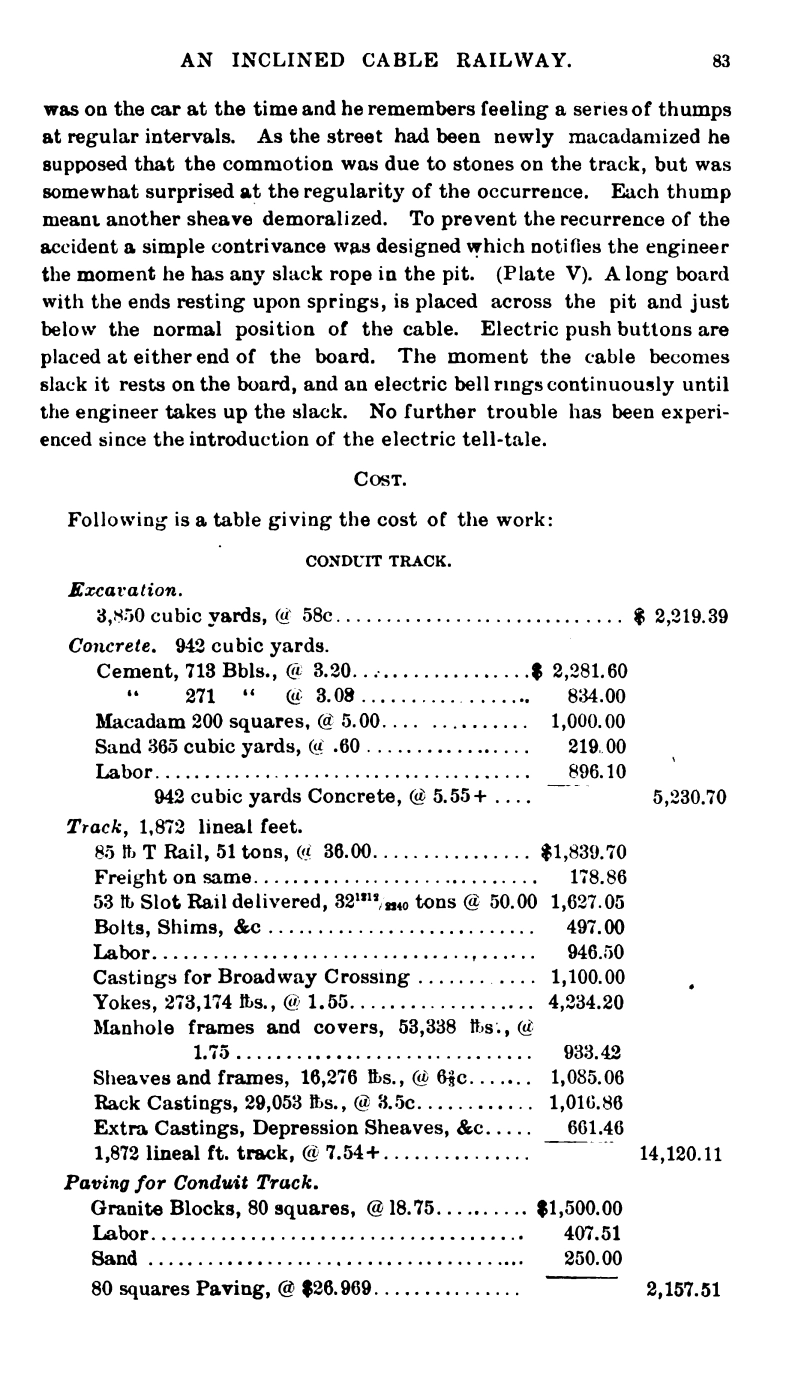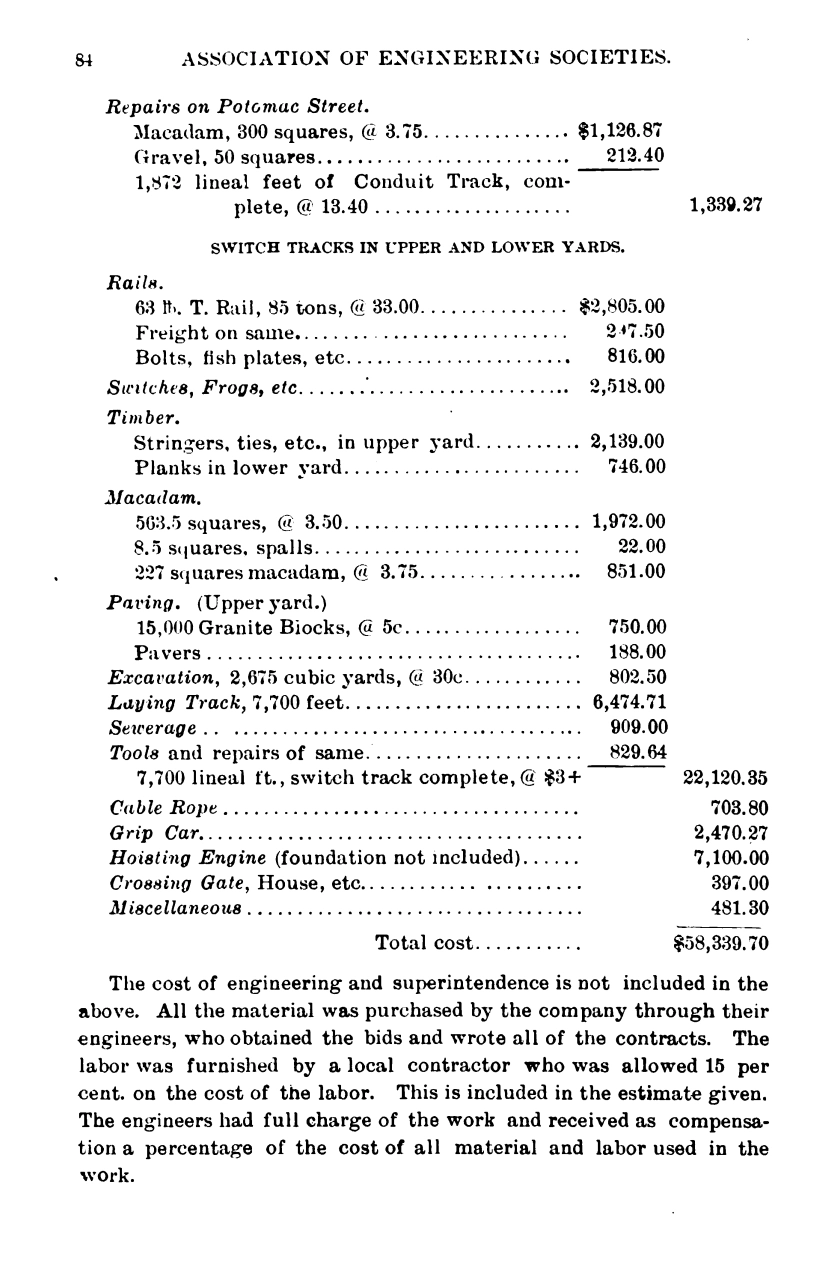
Table of Contents
- The Lemp Brewery
- Lemp/Cherokee Cave
- Western Cable Railway
- Lemp Mansion
- Lemp Ephemera
- Lemp Advertisements
- Myths and Rumors
- The Lemp Mansion Cave Connection
- The Ghost Photo
Western Cable Railway
The following article, written in 1892, describes the Western Cable Railway in great detail. I have summarized it below, but I recommend reading the whole report as it is well-written and includes some additional commentary on the initial tests and troubleshooting of the system. Prior to discovering this document, I had never found any details on this "cable railway' such as where it ran, how it operated and why it was a "cable railway". Here, we have all of that information plus detailed technical drawings and even a map of the entire railway! I've taken the liberty to use the map to create the above overlay so as to better visualize the exact route compared to the present-day landscape.
The Western Cable Railway was a small private railway owned and operated by the Lemp Brewery. It was designed in the late 1880's by an engineer named Colonel Henry Flad. This new company took shape in June of 1890 and by June of 1891, their railway was fully operational. The Western Cable Railway was so named because at the time the Lemp Brewery was still called the "Western Brewery" and because this was no ordinary railway; It was a uniquely designed "inclined cable railway" which connected the grounds of the Lemp Brewery to the lower shipping yards of the Iron Mountain and Southern Railroad. These yards were incoveniently located 2,000 feet away from the brewery and 95 feet lower in elevation down a grade reaching 7 2/10%.
This cable railway consisted of a hoisting engine and a 12 ft drum which was installed in the top of Lemp Brewery's wash house. The wash house is situated at, what at the time was, the edge of the brewery near Broadway and it was directly in line with Potomac Street. Potomac is the hill down which the railway traversed from the brewery to reach the lower shipping yard at the Iron Mountain and Southern Railway. The cable itself ran underground from the hoist on the wash house down to the end of the line where it was permanently attached to a "grip car". The grip car was used to pull two loaded, or three empty, train cars up the hill, being powered by the cable hoist. Once it reached the upper yard near the wash house (at the large train tunnel facing Broadway) the cars were transferred to a light locomotive which moved them as needed through the brewery grounds. Going back downhill, the grip car was powered by gravity and its descent controlled with brakes.
Further information can be found in the below article and the interesting commentary on the initial tests of the system are under the second to last heading titled "Service".
Here are a couple depictions of the Western Cable Railway in action: 1, 2, from some Lemp Ephemera circa 1893.

